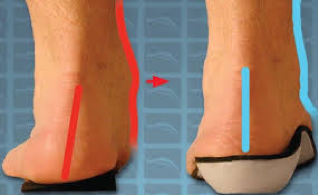What is Tibialis Posterior Tendinopathy?
This painful condition refers to ankle pain and foot with an associated flat foot.
The tibialis posterior (TP) tendon is one of the major stabilising structures in the foot. It runs behind the bump on the inside of the ankle (the medial malleolus) and inserts into one of the bones of the instep (navicular). The main functions of the tendon are to support the arch and keep the foot turned inwards when walking. It keeps the arch supported when we stand on our toes and push off with walking. When it becomes inflamed and torn, the foot pronates and the heel moves outwards. Initially, pain is felt along the length of the tendon (behind the medial malleolus), but as the problem worsens deformity becomes apparent and the foot flattens and turns outwards.
This condition develops as the ligaments that support the arch fail, changing the mechanics of the foot. As such the tendons and joints become dysfunctional and inflamed. The natural history is that it gradually progresses and worsens.
Treatment options range from non-operative to operative.

NON-OPERATIVE MANAGEMENT
Modification of Activities and Therapies
In the early or mild stages of TP tendon dysfunction, simple painkillers, orthotics, and physiotherapy are used. A custom moulded splint can be made to try and correct the heel deviation and arch when walking.
OPERATIVE MANAGEMENT
Tendon Surgery and Flat Foot reconstruction
When the ability to single heel raise is lost, conservative measures often are inadequate and symptoms and severity progress. Surgery aims to treat the torn tendon and reinforce the arch and alignment of the foot. The surgery involves tenon and bony procedures, and is effective with a good outcome expected in 90% of cases.
